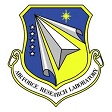AFRL posts BAA for Enterprise Services Development and Component Maximization
 On May 23, the U.S. Air Force Research Laboratory posted a broad agency announcement for Enterprise Services Development and Component Maximization (ESDCM) (BAA-AFRL-RIK-2015-0010). For best consideration for FY 17 funding, the agency recommends that interested parties submit white papers by July 1.
On May 23, the U.S. Air Force Research Laboratory posted a broad agency announcement for Enterprise Services Development and Component Maximization (ESDCM) (BAA-AFRL-RIK-2015-0010). For best consideration for FY 17 funding, the agency recommends that interested parties submit white papers by July 1.
FUNDING OPPORTUNITY DESCRIPTION:
The Office of the Undersecretary of Defense (OUSD) has directed the Department of Defense (DoD) and Intelligence Community (IC) to improve their capabilities to share information and re-use developed software. The purpose of the Defense Intelligence Information Enterprise (DI2E) framework is to make this happen through community involvement, standardization, and RDT&E of Enterprise Services and component modularity for maximum interoperability. The technical objectives of this BAA are to research innovative, disruptive technologies and methods to enable the DI2E vision of a DoD – IC combined shared information world that maximizes software re-use. The ESDCM BAA seeks significant advances to the DI2E mission across the following sub-disciplines.
The sub-disciplines of interest to this solicitation include:
a) Infrastructure Service Technologies – Critical information assurance components for infrastructures and the ability to address a range of security issues to include (but not limited to): Identity Management, Access Management, Credential Management, Authentication Management, Cryptography Management, Security Metadata Management, Digital Policy Management, and System and Communication Protection.
b) Assured Coding Practices – Assured coding practices & code verification enable a level of trust in its execution in a decentralized computing environment. Mathematically formulated, coupled with the use of formally defined assertion based formal programming techniques, have proven their high level of determinism ensuring predictable results should a system and/or software be compromised. Unfortunately this level of determinism comes with an extraordinary overhead which renders these techniques impractical. Foundational research is needed to develop novel approaches that could allow for this mathematical guarantee without this large overhead.
c) Assured Data Communications – With the advent and mandatory adoption of IPv6 technology, it is imperative to identify its shortcomings and design the necessary specifications in order to securely utilize this technology in all efforts involving data communications in the intelligence community. Being able to monitor and control this type of communication ensures that the anticipation, detection, and analysis of malicious activities will lead to the thwarting and defeating of their intended consequences in a predictable manner.
d) Assured Cloud Database Access – The advent of cloud computing has posed an increasing need for assured information sharing guaranteeing the three pillars of the CIA triad (Confidentiality, Integrity, and Availability) are met. Research and definition of these standards would enable efficient and secure access to reading and writing to a cloud based database.
e) Enterprise Evaluation – Ability to evaluate components for inclusion in integrated prototype architectures.
f) Organizational Compliancy – Various organizational standards and security measures often hinder the software development and transition process. Being able to deploy open systems architectures in a secure manner within a controlled government information system (IS) is critical.
g) Content Service Technologies – Ability to coordinate, optimize, and execute orchestration of services across information infrastructures.
The innovative ESDCM technologies supporting the sub-disciplines above may require the planning and conducting of field tests to demonstrate the advancement in the specific technology. This includes preparing test plans; acquiring, transporting, deploying, and operating all equipment; operating and measuring ground truth sources; evaluating and monitoring test execution; and documenting all test results.
The ESDCM BAA will investigate assured computing architectures and associated technologies that will ultimately be incorporated within the Defense Information & Intelligence Enterprise (DI2E). The goal of interfacing with the DI2E is twofold; first, provide a more cohesive and complete situational awareness and assessment of enemy activities for on-going US missions, and second, provide surgical cueing for ESDCM opportunities. Automated knowledge-based tools and decision aids will provide a more effective use of the DI2E with its complementary intelligence data for improved Situational Awareness. The development of infrastructures, tools and techniques that equip the operational analyst in providing timely and highly accurate characterization of signals, objects and events leading to threat analysis is increasingly critical to the warfighter.
Full information is available here.
Source: FedBizOpps







